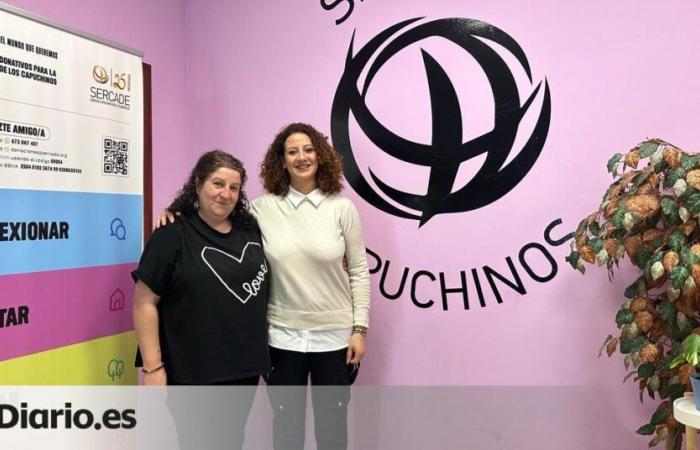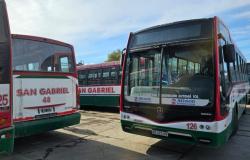Ghizlene Tijra, 30, was thrown from home to give up her culture and the Muslim religion. “They told me that I left home and I saw myself without knowing where to go or what to do with my life,” he recalls. Today resides in one of the inclusion housing of the San Antonio Social Center, a project of the Capuchin brothers that is installed in the Torrero neighborhood of Zaragoza.
After going through the social services of Almunia and conducting an interview with the center, he became part of the housing project for women and today, almost a year later, he says safely: “Being part of this house has given me breath and a lot of confidence.”
The center has been working with people in a severe social exclusion since 2004, something that they fight, according to the regional coordinator of SerCade in Aragon, Jessy Clemente, offering “personalized accompaniment and listening to each user to see what he needs”.
A house to start over
“It is not I give you a home and I forget. It is a home for something, with an end, so they complement each other with personalized support and a work plan. All the people who pass through here are also our family. For us they are not numbers, but important people to whom we want to help get ahead,” he says.
Through these accommodations, this center meets one of its basic pillars focused on creating community as a “change catalyst”, so that people who are housed can build living networks, be accompanied and feel like a family.
In their accommodations, distributed by Zaragoza and connected to the center, young people, older people, solo women and families live. Some of them have an agreement with the City Council, but the planned duration of stay, of a year, is extended in practice to a year and a half or two due to the current situation of the house in the city.
“Now the departures of the accommodations are more complicated because there is no affordable rental housing. Prices are very high and, although savings plans are part of our goals, it is a great difficulty that they can acquire autonomy and be independent,” says Clemente.
The rental price in Aragon is the highest in its history and, according to idealist, the rental price has verified in 2024 a 8.6 % increase in the community, placing the square meter in the territory at 9.4 euros.
Jessy also shares that 30% of people in street situations are under 29 years old, a fact that led them to launch, in 2022, a pilot project of youth withouthogarism. “Although there are people of all ages in our homes, a greater number of young people begins to be noticed,” he confesses.
Structural brakes and social stigmas
Despite the advances that achieve within the center, many people are trapped by structural obstacles that slow their independence processes, such as the acquisition of the necessary papers to work.
“Without papers there is no job and that is a difficulty to get ahead. I am still in the process of roots, but I hope that they will soon arrive because now, if you shape, you are supposed to have it easier,” he shares.
To this idea, Clemente adds that, although there is collaboration with the public administration, “the resources are insufficient” and “it is often difficult to expedite the regularization process”, so “personal processes are ran into the difficulties of the system.”
However, he confirms that, as soon as people have their documentation, “they begin to work, to form and leave very fast from the accommodations and the center.”
Exclusion is also aggravated by the lack of sensitivity in the environment. “I still see that society is not very sensitized towards the person who is in a street or a lot of social disadvantage. There is still a lot of value and very fear judgment sometimes because of ignorance,” says Jessy, who also adds that “sometimes it is heard saying that if they are in that situation it is because they have wanted.”
Ghizlene has also lived: “I because I can defend myself with the Spanish, but those who do not, do I think they take them away or judge them. It is as if I had fear of the unknown.”
In this sense, Clemente adds that “all people are willing that at a given time we can see ourselves in that situation”, so it is necessary that there is a greater awareness since the educational centers.
Therefore, from the center they drive this type of talks in schools and institutes, where many young people come to know the center, resources and stories of users. “This is putting a seed, which I think is the way to do it,” he says.
In this regard, Tijra remains positive, since it considers that “the new generations are somewhat more sensitized and do not usually judge or separate people so much.”
Train to recover autonomy
Although one of the pillars of this social center is housing, they also carry out training workshops, emotional care spaces and a clear commitment to community creation.
“We are the protagonists of change and have the willpower to get ahead. They offer us comfort, but in the end it is we who have to love,” Ghizlene summarizes.
Among the workshops, she highlights the wood carving or the emotional management from art, where “they help you know what you feel, to express it and to feel identified.”
In addition, there are clay classes, painting or Spanish, an activity in which this user is voluntary when speaking Arabic and being able to translate. This adds to his imminent training in aesthetics, with which he intends to “have more experience to work, save and, hopefully, be able to rent a home or a room.”
Trust the process
In 2024, the San Antonio Social Center attended 541 people, of which 68 lived in one of their accommodations. “I wish there were not to exist resources like ours, because it would mean that people do not have those needs,” says Jessy, but “our horizon is that all the people who come later come out with the dignity well high and with all their rights covered.”
With all this, both from the Social Center and Ghizlene, they invite all the people who can feel alone to go there, seek help and “do not have a bad time to alone”, since, although “it is not immediate”, “you have to trust the process because you can get ahead.”






